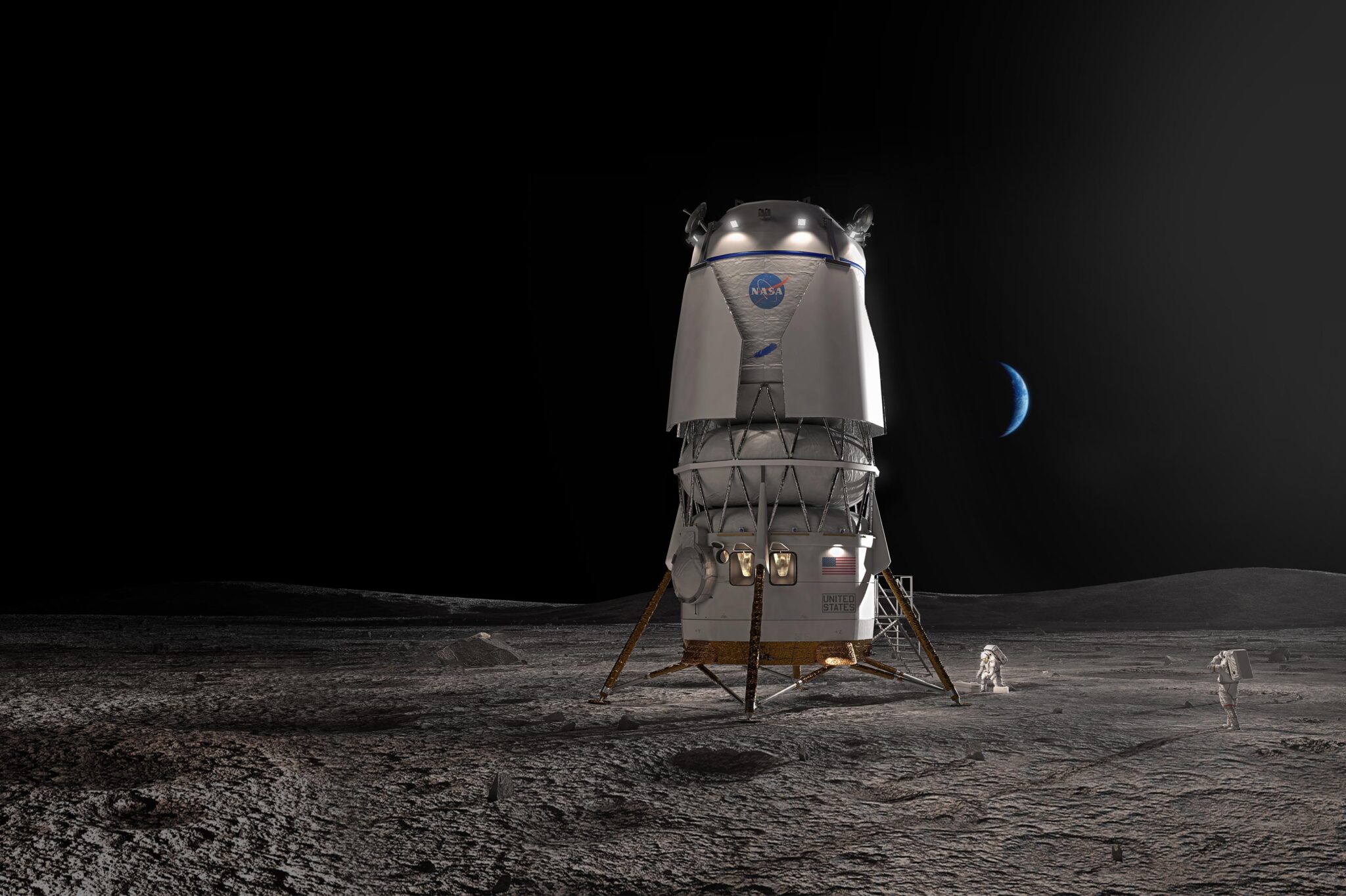Having lost out in the competition to produce NASA’s initial lunar lander for its Human Landing System (HLS), Blue Origin’s National Team celebrated the award of a contract for a second lander design under the agency’s NextSTEP-2 Appendix P Sustaining Lunar Development (SLD) programme.
Blue Origin’s National Team partners include Lockheed Martin, Draper, Boeing, Astrobotic and Honeybee Robotics. The Blue Moon lander will be used for the Artemis V mission onwards. In addition to design and development work, the contract includes one uncrewed demonstration mission to the lunar surface before a crewed demo on the Artemis V mission in 2029. The total value of the firm-fixed price contract is US$3.4 billion.

Blue Moon lander uses LOX (Liquid Oxygen) and LH2 (Liquid Hydrogen) as its propellants. Courtesy: Blue Origin
For the Artemis V mission, NASA’s SLS (Space Launch System) rocket will launch four astronauts to lunar orbit aboard the Orion spacecraft. Once Orion docks with the Lunar Gateway space station in a high lunar orbit, two astronauts will transfer to Blue Origin’s human landing system for about a week-long trip to the Moon’s South Pole region where they will conduct science and exploration activities. Artemis V is at the intersection of demonstrating NASA’s initial lunar exploration capabilities and establishing the foundational systems to support recurring complex missions both in lunar orbit and on the surface, as part of the agency’s Moon to Mars exploration approach.
“Today we are excited to announce Blue Origin will build a human landing system as NASA’s second provider to deliver Artemis astronauts to the lunar surface,” said NASA Administrator Bill Nelson. “We are in a golden age of human spaceflight, which is made possible by NASA’s commercial and international partnerships. Together, we are making an investment in the infrastructure that will pave the way to land the first astronauts on Mars.”
The first landing missions will be Artemis III and IV which will use SpaceX’s Starship-based lunar landing craft. Both the SpaceX and Blue Origin designs are strongly dependent on improving the technology involved in storing the cryogenic propellants (LOX/Liquid Methane for SpaceX and LOX/LH2 for Blue Origin) with minimum boil-off and having the ability to transfer these propellants. Blue Origin notes that it is developing solar-powered 20-degree Kelvin cryocoolers to prevent LOX-LH2 boil-off.
Critics remain concerned that this technology will not be ready in time, albeit that the pressure will be more on SpaceX with its late December 2025 landing date for Artemis V. Other commentators – both internal and external – applaud having at least two designs for competition and surface access for redundancy reasons.
“Having two distinct lunar lander designs, with different approaches to how they meet NASA’s mission needs, provides more robustness and ensures a regular cadence of Moon landings,” said Lisa Watson-Morgan, manager, Human Landing System Program at NASA’s Marshall Space Flight Center in Huntsville, Alabama. “This competitive approach drives innovation, brings down costs, and invests in commercial capabilities to grow the business opportunities that can serve other customers and foster a lunar economy.”
While SpaceX was precluded from bidding for this second lander contract, the other team, Dynetics, lost out to Blue Origin over concerns about its technology development and the fact that so many would have to be tested at once.
Comment by David Todd: NASA is unwise in not going for a smaller simpler storable propellant lander for the initial Artemis landing missions. We don’t think that SpaceX will be ready in time for Artemis III’s planned late 2025 landing date. We also believe that China will probably beat the US back to the Moon. Nevertheless, it is admirable that there are now two NASA lunar landing systems being developed, even if their cryogenic technologies, while necessary for long-term lunar operations, may not be ready for a while.







